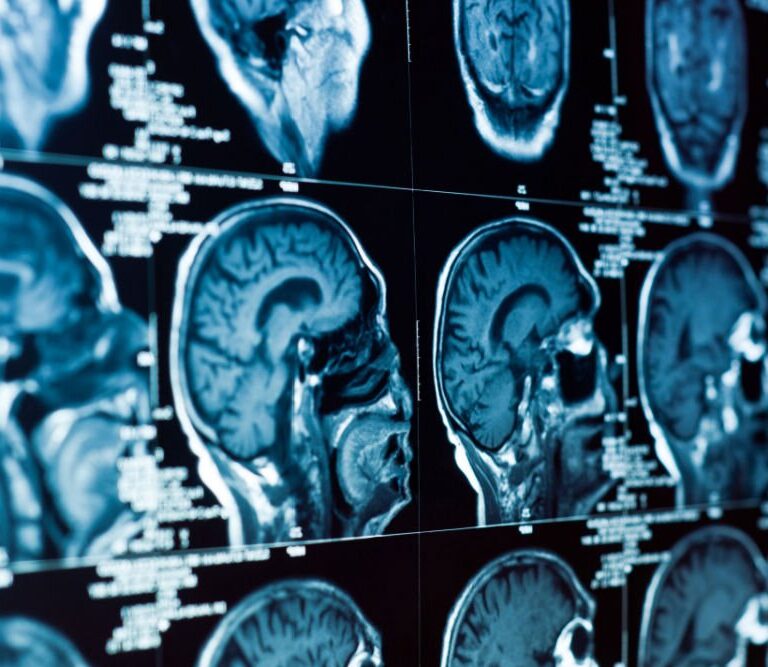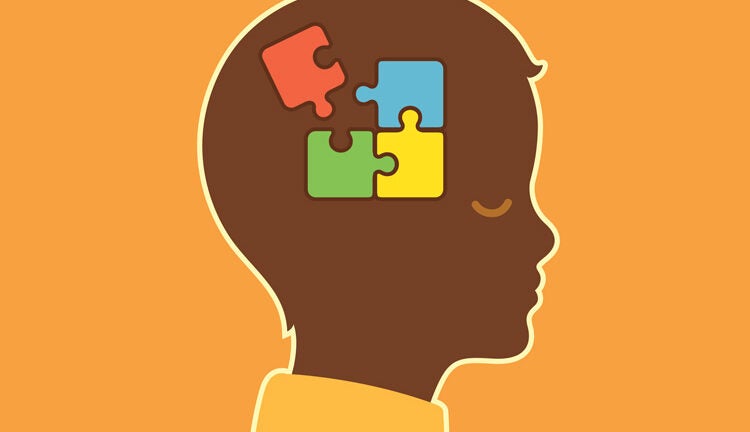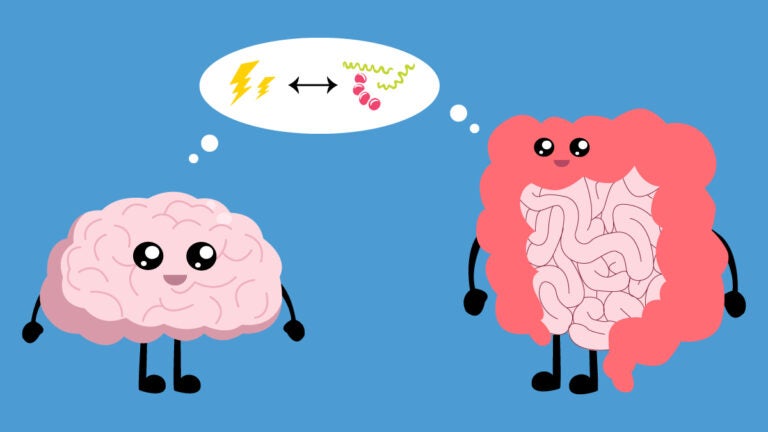Current & Published Research
Our bodies are one of the most fundamental ways we understand ourselves, the world, and other people. Our metaphors relay this knowledge: we feel with our gut; we love with our heart; we toss ideas as if with our hands.
Our program explores the idea that rudimentary sensory-motor brain regions, which may have been originally designed for processing our own body states, may be intrinsically involved in processing aspects of higher cognition. These include language, thought, emotions, empathy, and social understanding.

Current Studies
Past Studies
Peer Reviewed Articles
2024
- Loureiro F, Ringold SM, Aziz-Zadeh L. Interoception in Autism: A Narrative Review of Behavioral and Neurobiological Data. Psychol Res Behav Manag. 2024;17:1841-1853
https://doi.org/10.2147/PRBM.S410605 - Shipkova, M., Butera, C. D., Flores, G. D., Kilroy, E., Jayashankar, A., Harrison, L., … & Aziz‐Zadeh, L. (2024). Caregiver and youth inter‐rater assessment agreement in autism spectrum disorder, developmental coordination disorder, and typical development. Autism Research. http://doi.org/10.1002/aur.3110
2023
- Jayashankar, A., & Aziz-Zadeh, L. (2023). Disgust Processing and Potential Relationships with Behaviors in Autism. Current Psychiatry Reports. https://doi.org/10.1007/s11920-023-01445-5
- Raman, N., Ringold, S. M., Jayashankar, A., Butera, C. D., Kilroy, E., Harrison, L., & Cermak, S. A.(2023). Relationships between Affect Recognition, Empathy, Alexithymia, and Co-Occurring Conditions in Autism. Brain Sciences, 13(8), 1161. https://doi.org/10.3390/brainsci13081161
- Frederick, R., Dolgin, E., Blustein, D., Guerrero, F. J., Aziz-Zadeh, L., Sutherland, S., Fieseler, C., Alex, B., & Case, E. (2023). Summer reading 2023. Science. https://doi.org/10.1126/science.adi7361
- Miller, H. L., Licari, M. K., Bhat, A., Aziz-Zadeh, L. S., Van Damme, T., Fears, N. E., Cermak, S. A., & Tamplain, P. M. (2023). Motor problems in autism: Co-occurrence or feature?. Developmental medicine and child neurology, 10.1111/dmcn.15674. Advance online publication. https://doi.org/10.1111/dmcn.15674
- Jayashankar, A., Bynum, B., Butera, C., Kilroy, E., Harrison, L., Aziz-Zadeh, L. (2023). Connectivity differences between inferior frontal gyrus and mentalizing network in autism as compared to developmental coordination disorder and non-autistic youth. Cortex, 0010-9452. https://doi.org/10.1016/j.cortex.2023.06.014
- Butera, C., Kaplan, J., Kilroy, E., Harrison, L., Jayashankar, A., Loureiro, F., & Aziz-Zadeh, L. (2023). The relationship between alexithymia, interoception, and neural functional connectivity during facial expression processing in autism spectrum disorder. Neuropsychologia, 108469. https://doi.org/10.1016/j.neuropsychologia.2023.108469
2022
- Ringold, S. M., McGuire, R. W., Jayashankar, A., Kilroy, E., Butera, C. D., Harrison, L., Cermak, S. A., & Aziz-Zadeh, L. (2022). Sensory Modulation in Children with Developmental Coordination Disorder Compared to Autism Spectrum Disorder and Typically Developing Children. Brain sciences, 12(9), 1171.
- Abrams, G., Jayashankar, A., Kilroy, E. et al., Butera, C., Harrison, L., Ring, P., Houssain, A., Nalbach, A., Cermak, S. A., & Aziz-Zadeh, L. (2022). Differences in Praxis Errors in Autism Spectrum Disorder Compared to Developmental Coordination Disorder. J Autism Dev Disord. https://doi.org/10.1007/s10803-022-05858-8
- Kilroy, E., Gerbella, M., Cao, L., Molfese, P., Butera, C., Harrison, L., Jayashankar, A., Rizzolatti, G., & Aziz-Zadeh, L. (2022). Specific tractography differences in autism compared to developmental coordination disorder. Scientific Reports, 12, 19246. https://doi.org/10.1038/s41598-022-21538-0
- Butera, C. D., Harrison, L., Kilroy, E., Jayashankar, A., Shipkova, M., Pruyser, A., & Aziz-Zadeh, L. (2022). Relationships between alexithymia, interoception, and emotional empathy in autism spectrum disorder. Autism. https://doi.org/10.1177/13623613221111310
- Aziz-Zadeh, L. (2022). Summer book review: Existential Physics. Science. https://doi.org/10.1126/science.abq6526
- Kilroy, E., Ring, P., Hossain, A., Nalbach, A., Butera, C., Harrison, L., Jayashankar, A., Vigen, C., Aziz-Zadeh, L. & Cermak, S. A. (2022). Motor performance, praxis, and social skills in autism spectrum disorder and developmental coordination disorder. Autism Research. https://doi.org/10.1002/aur.2774
- Borelli, E., Butera, C., Katirai, A., Adams, T. C., & Aziz-Zadeh, L. (2022). Impact of motor stroke on novel and conventional action metaphor comprehension. Brain and Language, 226, 105081. https://doi.org/10.1016/j.bandl.2022.105081
2021
- Chernikova, M. A., Flores, G. D., Kilroy, E., Labus, J. S., Mayer, E. A., & Aziz-Zadeh, L. (2021). The brain-gut-microbiome system: pathways and implications for autism spectrum disorder. Nutrients, 13(12), 4497. https://doi.org/10.3390/nu13124497
- Harrison, L. A., Kats, A., Kilroy, E., Butera, C., Jayashankar, A., Keles, U., & Aziz-Zadeh, L. (2021). Motor and sensory features successfully decode autism spectrum disorder and combine with the original RDoC framework to boost diagnostic classification. Scientific reports, 11(1), 1-16. https://doi.org/10.1038/s41598-021-87455-w
- Kilroy, E., Harrison, L., Butera, C., Jayashankar, A., Cermak, S., Kaplan, J., Williams, M., Haranin, E., Bookheimer, S., Dapretto, M. & Aziz-Zadeh, L. (2021). Unique deficit in embodied simulation in autism: An fMRI study comparing autism and developmental coordination disorder. Human brain mapping, 42(5), 1532-1546. https://doi.org/10.1002/hbm.25312
2020
- Butera, C., Ring, P., Sideris, J., Jayashankar, A., Kilroy, E., Harrison, L., Cermak, S., & Aziz‐Zadeh, L. (2020). Impact of sensory processing on school performance outcomes in high functioning individuals with autism spectrum disorder. Mind, Brain, and Education, 14(3), 243–254. https://doi.org/10.1111/mbe.12242
2019
- Kilroy, E., Cermak, S.A., Aziz-Zadeh L. (2019). A review of functional and structural neurobiology of the action observation network in autism spectrum disorder and developmental coordination disorder. Brain Sciences, 9(4), 75. https://doi.org/10.3390/brainsci9040075
- Kilroy, E., Aziz-Zadeh, L. & Cermak, SA. (2019). Ayres theories of autism and sensory integration revisited: What contemporary neuroscience has to say. Brain Sciences, 9(3). https://doi.org/10.3390/brainsci9030068
- Harrison L.A., Kats A., Williams M.E., & Aziz-Zadeh L. (2019). The importance of sensory processing in mental health: A proposed addition to the research domain criteria (RDoC) and suggestions for RDoC 2.0. Frontiers in Psychology, 10. https://doi.org/10.3389/fpsyg.2019.00103
2018
- Aziz-Zadeh, L., Kilroy, E., & Corcelli, G. (2018). Understanding activation patterns in shared circuits: Toward a value driven model. Frontiers in Human Neuroscience, 12. https://doi.org/10.3389/fnhum.2018.00180
- Liew, S.-L., Garrison, K., Ito, K., Heydari, P., Sobhani, M., Werner, J., Damasio, H., Winstein, C.J., & Aziz-Zadeh, L. (2018). Laterality of post-stroke cortical motor activity during action observation is related to hemispheric dominance. Neural Plasticity. https://doi.org/10.1155/2018/3524960
- Liew, S.L., Anglin, J., Bank,N., Sondag, M., Ito, K., Kim, H., Chan, J., Ito, J., Jung, C., Khoshab, N., Lefebvre, S., Nakamura, W., Saldana, D., Schmiesing, A., Tran, C., Vo, D., Ard, T., Heydari, P., Kim, B., Aziz-Zadeh, L., Cramer, S., Liu, J., Soekadar, S., Nordvik, J., Westlye, L., Wang, J., Winstein, C., Yu, C., Ai, L., Koo, B., Craddock, C., Milham, M., Lakich, M., Pienta, A., Stroud, A. (2018). A large, open source dataset of stroke anatomical brain images and manual lesion segmentations. Scientific Data, 5(1), 1-11. https://doi.org/10.1038/sdata.2018.11
2016
- Aziz-Zadeh, L. & Gamez-Djokic, V. (2016) The interaction between metaphor and emotion processing in the brain. Emotion Review. https://doi.org/10.1177/1754073915595098
2015
- Reynolds, J., Licari, M., Billington, J., Chen, Y., Aziz-Zadeh, L., Werner, J., Winsor, A.M., & Bynevel, M. (2015). Developmental dyspraxia and the mirror system: an fMRI study. International Journal of Developmental Neuroscience. doi: 10.1016/j.ijdevneu.2015.10.003
- Garrison, K.A., Rogalsky, C., Sheng, T., Liu, B., Damasio, H., Winstein, CJ, & Aziz-Zadeh, L. (2015). Functional MRI preprocessing in lesioned brains: Manual versus automated region of interest analysis. Frontiers in Neurology, 6. https://doi.org/10.3389/fneur.2015.00196
- Sobhani, M. , Baker, L., & Aziz-Zadeh, L. (2015). Psychopathic traits modulate microstructural integrity of right uncinate faciculus. NeuroImage: Clinical, 8, 32-38. https://doi.org/10.1016/j.nicl.2015.03.012
2014
- Demiris, Y., Aziz-Zadeh, L., & Bonaiuto, J. (2014). Information processing in the mirror neuron system in primates and machines. Neuroinformatics, 12(1), 63-91. https://doi.org/10.1007/s12021-013-9200-7
- Liew, S.-L., Sheng, T., & Aziz-Zadeh, L. (2013). Both novelty and expertise increase action observation network activity. Frontiers in Human Neuroscience, 7. https://doi.org/10.3389/fnhum.2013.00541
2013
- Fox, G., Sobhani, M., & Aziz-Zadeh, L. (2013). Witnessing hateful people in pain modulates brain activity in regions associated with physical pain and reward. Frontiers Psychology, 4. https://doi.org/10.3389/fpsyg.2013.00772
- Garrison, K., Aziz-Zadeh, L., Wong, S., & Winstein, C.J. (2013). Modulating the motor system by action observation after stroke. Stroke; a Journal of Cerebral Circulation, 44(8), 2247-2253. https://doi.org/10.1161/STROKEAHA.113.001105 (Both Aziz-Zadeh and Winstein were equal senior authors on this manuscript; K.G. was co-mentored.)
- Liew, S.-L., Sheng, T., & Aziz-Zadeh, L. (2013). Experience with an amputee modulates one’s own sensorimotor response during action observation. NeuroImage, 69. https://doi.org/10.1016/j.neuroimage.2012.12.028
- Aziz-Zadeh, L., Liew, S.L., & Dandekar, F. (2013). Exploring the neural correlates of visual creativity. Social Cognitive and Affective Neuroscience, 8(4). https://doi.org/10.1093/scan/nss021
- Demiris, Y., Aziz-Zadeh, L., & Bonaiuto, J. (2013). Information processing in the mirror neuron system in primates and machines. Neuroinformatics [epub ahead of print].
- Garrison, K., Aziz-Zadeh, L., Wong, S., & Winstein, C.J. (2013). Modulating the motor system by action observation after stroke. Stroke, 44, 2247-2253.
2012
- Aziz-Zadeh, L., Sheng, T., Liew, S.-L., & Damasio, H. (2012). Understanding otherness: The neural bases of action comprehension and pain empathy in a congenital amputee. Cerebral Cortex, 22(4). https://doi.org/10.1093/cercor/bhr139
- Sobhani, M., Fox, G.R., Kaplan, J., & Aziz-Zadeh, L. (2012). Interpersonal liking modulates Motor-Related Neural Regions. PLoS ONE, 7(10), e46809. https://doi.org/10.1371/journal.pone.0046809
- Werner, J., Cermak, S., & Aziz-Zadeh, L. (2012). Neural correlates of developmental coordination disorder: The mirror neuron system hypothesis. Journal of Behavioral and Brain Science, 2(2), 258-268. https://doi.org/10.4236/jbbs.2012.22029
2011
- Liew, S.-L., Garrison, K., Werner, J., & Aziz-Zadeh, L. (2011). The mirror neuron system: Innovations and implications for occupational therapy. OTJR: Occupation, Participation and Health. https://doi.org/10.3928/15394492-20111209-01
- Sobhani, M. & Bechara, A. (2011). A Somatic Marker Perspective of Immoral and Corrupt Behavior. Social Neuroscience, 6(5-6), 640. https://doi.org/10.1080/17470919.2011.605592
- Liew, S.-L. & Aziz-Zadeh, L. (2011). The neuroscience of language and action in occupations: A review of findings from brain and behavioral sciences. Journal of Occupational Science, 18(2), 97-114. https://doi.org/10.1080/14427591.2011.575758
- Liew, S.-L., Ma, Y.,Han, S., & Aziz-Zadeh, L. (2011). Who’s afraid of the boss: Cultural differences in social hierarchies modulate self-face recognition in Chinese and Americans. PLoS ONE, 6(2). https://doi.org/10.1371/journal.pone.0016901
- Liew, S.-L., Han, S., & Aziz-Zadeh, L. (2011). Familiarity modulates mirror neuron and mentalizing regions during intention understanding. Human Brain Mapping, 32(11). https://doi.org/10.1002/hbm.21164
2010
- Landau, A., Aziz-Zadeh, L., & Ivry, R. (2010). The influence of language on perception: Listening to sentences about faces affects the perception of faces. Journal of Neuroscience, 30(45), 15254-15261. https://doi.org/10.1523/JNEUROSCI.2046-10.2010
- Sheng, T., Gheytanchi, A., & Aziz-Zadeh, L. (2010). Default network deactivations are correlated with psychopathic personality traits. PLoS ONE, 5(9), e12611. https://doi.org/10.1371/journal.pone.0012611
- Aziz-Zadeh L., Sheng T., & Gheytanchi A. (2010). Common premotor regions for the Perception and production of prosody and correlations with empathy and prosodic ability. PLoS ONE, 5(1), e8759. https://doi.org/10.1371/journal.pone.0008759
- Garrison, K., Winstein, C., Aziz-Zadeh, L. (2010). The mirror neuron system: A neural substrate for methods in stroke rehabilitation. Neurorehabilitation and Neural Repair, 24(5). https://doi.org/10.1177/1545968309354536
2009
- Aziz-Zadeh, L., Kaplan, J. T., & Iacoboni, M. (2009). “Aha!”: The neural correlates of verbal insight solutions. Human Brain Mapping, 30(3), 908–916. https://doi.org/10.1002/hbm.20554
2008
- Kaplan, J.T., Aziz-Zadeh, L., Uddin, L., & Iacoboni, M. (2008). The self across the senses: An fMRI study of self-face and self-voice recognition. Social Cognitive and Affective Neuroscience, 3(3), 218-223. https://doi.org/10.1093/scan/nsn014
- Aziz-Zadeh, L., & Damasio, A. (2008). Embodied semantics for actions: Findings from functional brain imaging. Journal of Physiology, Paris, 102(1–3), 35–39. https://doi.org/10.1016/j.jphysparis.2008.03.012
- Aziz-Zadeh, L., Fiebach, C. J., Naranayan, S., Feldman, J., Dodge, E., & Ivry, R. B. (2008). Modulation of the FFA and PPA by language related to faces and places. Social Neuroscience, 3(3–4), 229–238. https://doi.org/10.1080/17470910701414604
2006
- Aziz-Zadeh, L., Wilson, S., Rizzolatti, G., & Iacoboni, M. (2006). A comparison of premotor areas activated by action observation and action phrases. Current Biology. 16(18): 1818-23. [pdf | sup]
- Gazzola V., Aziz-Zadeh L., & Keysers C. (2006). Empathy and the Somatotopic Auditory Mirror system in Humans. Current Biology, 16(18), 1824 – 1829. https://doi.org/10.1016/j.cub.2006.07.072 [pdf]
- Aziz-Zadeh, L., Koski, L., Zaidel, E., Mazziotta, J., & Iacoboni, M. (2006). Author response to “Mirror neurons and the lateralization of language”. Journal of Neuroscience. 26(25): 6666-6667s.
- Aziz-Zadeh, L., Koski, L., Zaidel, E., Mazziotta, J., & Iacoboni, M. (2006). Lateralization of the Human Mirror Neuron System. Journal of Neuroscience, 26(11), 2964-2970. [pdf]
- Aziz-Zadeh, L., Iacoboni, M., & Zaidel, E. (2006). Hemispheric sensitivity to body stimuli in simple reaction time. Experimental Brain Research, 170(1), 116-121. https://doi.org/10.1007/s00221-005-0194-8 [pdf]
2005
- Aziz-Zadeh, L., Cattaneo, L., Rochat, M., & Rizzolatti, G. (2005). Covert speech arrest induced by rTMS over both motor and nonmotor left hemisphere frontal sites. Journal of Cognitive Neuroscience, 17(6), 928–938. https://doi.org/10.1162/0898929054021157
2004
- Aziz-Zadeh, L., Iacoboni, M., Zaidel, E., Wilson, S., & Mazziotta, J. (2004). Lateralization in motor facilitation during hearing of action sounds. European Journal of Neuroscience 19(9):2609-2612. [pdf]
2002
- Aziz-Zadeh, L., Maeda, F., Zaidel, E., Mazziotta, J., & Iacoboni, M. (2002). Lateralization in motor facilitation during action observation: A TMS study. Experimental Brain Research, 144(1), 127-31. https://doi.org/10.1007/s00221-002-1037-5 [pdf]
Book Chapters
2021
- Butera, C. & Aziz-Zadeh. L. (2021). Mirror neurons and social implications for the classroom. In Macrine, S.L & Fugate, J.B. (Eds.), Movement Matters: How Embodied Cognition Informs Teaching and Learning. (Chapter 17). Cambridge, MA: MIT Press.
2015
- Gamez-Djokic, V., Molnar- Szakacs, & Aziz-Zadeh, L. (2015). Embodied Simulation: Building Meaning Through Shared Neural Circuitry. In Y. Coello (Eds.), Foundations of Embodied Cognition.
2012
- Liew, S.-L. & Aziz-Zadeh, L. (2012). The mirror neuron system, social control, and language. In Franks, D. & Turner, J.T. (Eds.), Handbook of Neurosociology.
2011
- Liew, S.-L. & Aziz-Zadeh, L. (2011). The mirror neuron system and social cognition. In Ebstein, Shamay-Tsoory, & Chew (Eds.), From DNA to Social Cognition (1st ed.).
2009
- Grafton, S.T., Aziz-Zadeh, L., & Ivry, R.B. (2009). Relative hierarchies and the representation of action. In Gazzaniga, M. (Eds.), The Cognitive Neurosciences (5th ed., pp. 641-655). MIT Press.
2008
- Aziz-Zadeh, L. & Ivry, R. (2008). Action representation and the mirror neuron system. In Sternad & D. Springer (Eds.), Progress in Motor Control: A Multidisciplinary Perspective. New York.
Learn more about the lab
Contact Us
Brain and Creativity Institute
3620A McClintock Avenue Los Angeles, CA 90089-2921
Center for the Neuroscience of Embodied Cognition
3620A McClintock Avenue Los Angeles, CA 90089-2921




